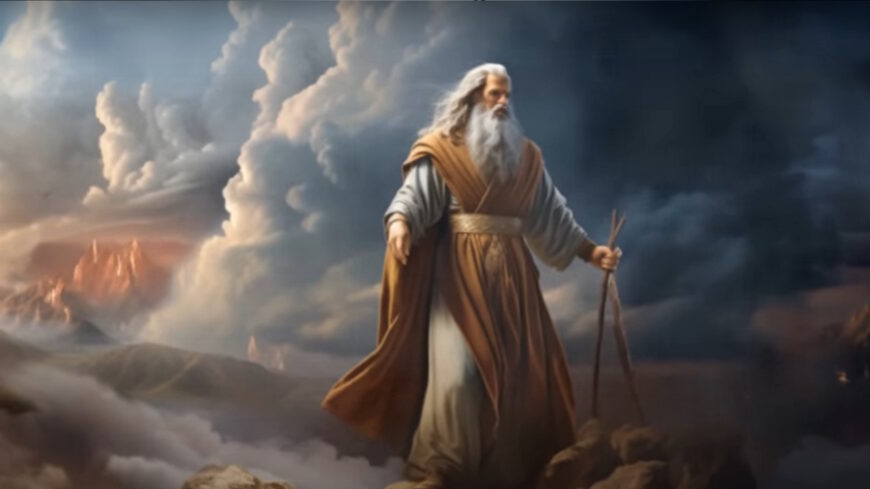
Origins of Yahweh & Judaism Are Not What You Think
by Neal Sendlak, Gnostic Informant
September 5, 2023
Video is available at Odysee & YouTube
The religious beliefs of Israel were rooted in the shared culture of Canaan. Although it had unique attributes that differed from the Canaanites, it still found expression in shared practices and language.
Some traditional practices couldn’t be merged with Yahwism, but others like sacred poetry, music, and architecture were adopted and became integral to Israelite religion.
The Old Testament’s embrace or rejection of these elements means that Canaanite religious influences still affect us today through biblical narratives. Before the findings at Ugarit-Ras Shamra, our knowledge of Canaanite religion was minimal and largely from indirect sources.
The Old Testament did mention Canaanite deities and rituals, but these were often in a negative light, making interpretations challenging. Mentions of Canaanite gods and rituals were also found in Egyptian, Mesopotamian, and Phoenician writings, including the Karatepe inscriptions from 1946. However, these weren’t enough to form a complete understanding.
Greek historians provided accounts of Canaanite beliefs, but it was hard to distinguish authentic traditions from later additions. Excavations at places like Byblos and Megiddo gave us glimpses, but only a fragmentary picture.
Now, thanks to discoveries at Ras Shamra (ancient Ugarit) in North Syria, the Canaanites tell their own story. Hundreds of clay tablets found there, written in a dialect close to Biblical Hebrew, offer rich insights. These tablets feature extensive mythological poems, records related to temple services, lists of deities and sacrifices, and details about temple workers and rituals. Additionally, artifacts linked to gods like Baal and Dagon, including temple remains and stelae, have been uncovered.
It’s crucial to understand that while there was a core Canaanite religious belief, local variations existed. Not every Canaanite city would have worshiped all the gods we know from the texts.
Canaanite religion was more of a public affair than a personal one. Its rituals, mostly centered on ensuring fertility, were community events. Though there were individual acts of devotion, as seen in Phoenician inscriptions, the religion was mainly a communal way to connect with nature’s forces. This involved practices believed to ensure continued creation and rejuvenation.
The prominence of some deities in mythological writings doesn’t always reflect their actual popularity among Canaanite devotees. Conversely, some gods, like Dagon, had a minimal role in myths—merely acknowledged as Baal’s father—but seemed quite revered, as evidenced by a dedicated temple and two stelae in Ugarit.
EL, the hebrew word for GOD, is the Supreme God and creator, and shows up as ALLAH in arabic.
YHWH’s revelation is always at a mountain, whether called Sinai or Horeb, pictures the event is a volcanic eruption. As these texts show, volcanism seems to be an essential attribute typically associated with YHWH, linking him to the Craftsman Metalurgy gods I mentioned before.
The account of the Sinai revelation, with its volcanic imagery, is meant to show that YHWH himself, and not simply a divine emissary, but a Demiurgic Crafstman.
Some believe Mount Sinai might be one of these Arabian volcanoes, which the Israelites approached after departing Egypt.
The Kenites seem to have been skilled metalworkers. Genesis 4 discusses Cain’s descendant, Tubal-Cain, as a craftsman skilled in molding copper and iron. Semitic cognates of Cain hint that metallurgical activities were integral to its meaning. Hence, Cain might originally have represented the pioneering figure in metallurgy, with the Kenites—both metalworkers and smelters—as his successors. Their association with a volcanic deity like YHWH becomes clearer in this context.
00:00:00 – Intro
00:02:21 – Chapter 1: Canaanite Religion
00:05:33 – Chapter 2: the God EL
00:07:14 – Chapter 3: Divine Craftsman
00:10:38 – Chapter 4: PTAH, Demiruge
00:12:48 – Chapter 5: Elephantine Jews
00:17:27 – Chapter 6: Yahweh, Midianite Metallurgy God
00:24:59 – Chapter 7: YHWH vs. Ba’al
00:32:18 – Chapter 8: Dionysian IAO
00:37:54 – Chapter 9: Dionysus of the Desert
00:39:57 – Chapter 10: Yahweh Inscriptions
00:42:50 – Chapter 11: EL, King of the North
00:45:45 – Chapter 12: Saturn, King of ELOHIM
00:53:57 – Chapter 13: Old Gods – BAD
00:58:00 – Chapter 14: Breasts of Gaia (2 Mountains)
01:01:27 – Chapter 15: Jewish Polythesim
01:03:22 – Chapter 16: Rise of Monotheism
01:19:25 – Chapter 17: Demetrius Phalerius
01:26:16 – OUTRO: Plutarch on ‘AMEN’
Connect with Neal Sendlak Odysee | YouTube
Cover image is a screenshot from the video

Truth Comes to Light highlights writers and video creators who ask the difficult questions while sharing their unique insights and visions.
Everything posted on this site is done in the spirit of conversation. Please do your own research and trust yourself when reading and giving consideration to anything that appears here or anywhere else.











